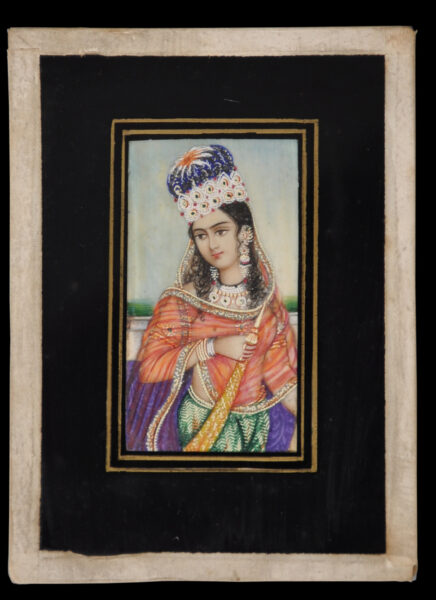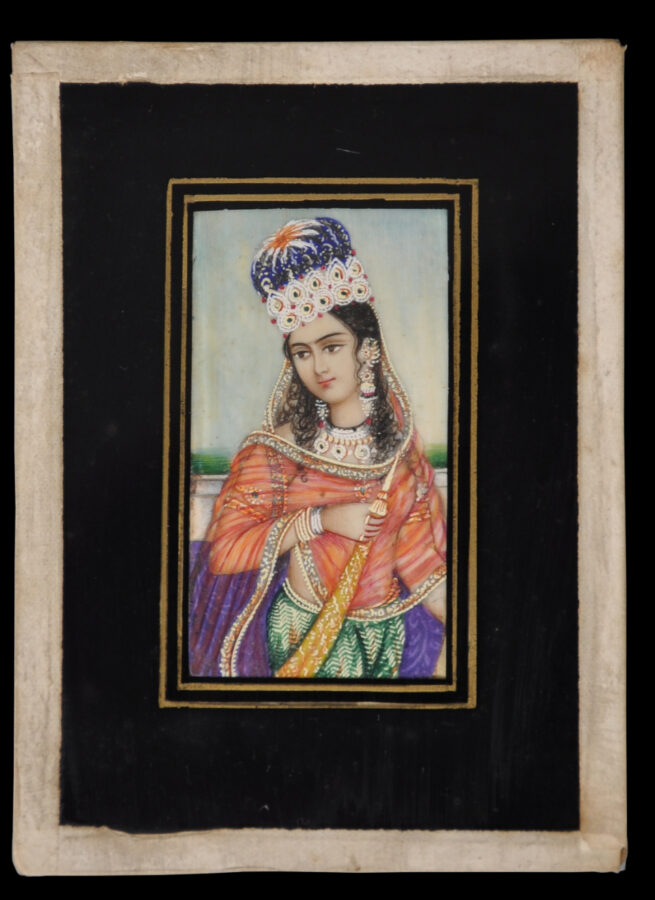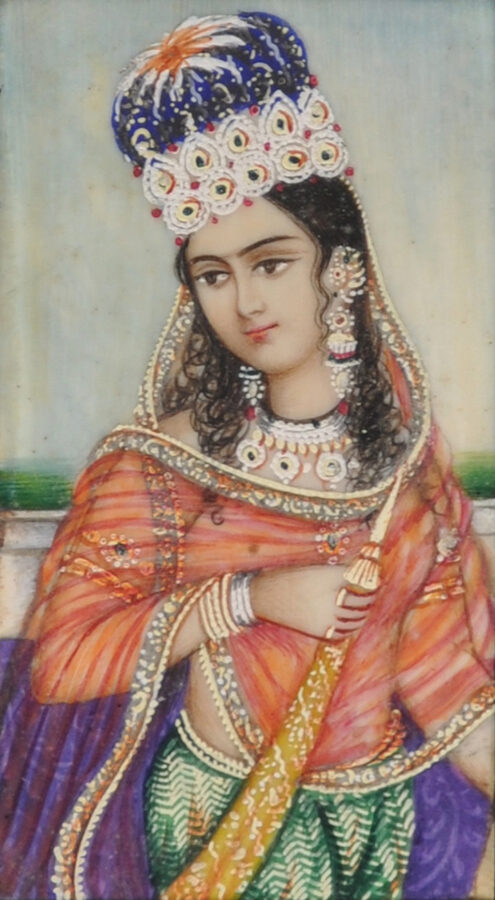This very fine painting shows a princess, most probably from the Oudh royal family, the rulers of Lucknow. The princess wears a tall crown that is typical of that worn in Oudh, as well as ample jewellery. She also wears a see-through shawl around her shoulders. This type of textile was woven in Lucknow.
The ruling family of Oudh (Lucknow) established themselves as independent hereditary rulers during the collapse of Mughal power in the early eighteenth century.
The strategic position of their capital and that of Oudh province prompted the British to use them as a buffer state between their own territories in the east, and the west. However the British used the inevitable intrigue and jockeying in the Oudh court to exert greater and greater influence. By the turn of the nineteenth century they managed to virtually exercise a veto right on the succession. The Nawabs devoted much of their time trying to project the outward signs of their sovereignty and regality, rather than exerting real power. Accordingly, Lucknow became an important centre for court arts.
Wajid ‘Ali Shah was the last Nawab of Oudh. By the mid-nineteenth century, the Nawabs had lost their political and military usefulness to the British, and so the British under Dalhousie, Governor General of the East India Company, annexed the kingdom outright in 1856 on the grounds of internal misrule. It was in Oudh where the first great revolt of Indian Independence started in 1857. Accordingly, there was much British fascination with the Oudh royal family and it is for this reason that images such as this example were produced.
The painting is in very fine condition. It retains its original mounts and is under the original thin sheet of glass that it had when it was produced.
References
Bhatt, R., The Life and Times of the Nawabs of Lucknow, Rupa & Co, 2006.
Markel, S. et al, India’s Fabled City: The Art of Courtly Lucknow, LACMA/DelMonico Books, 2010.
Varshney, V.P., Lucknow: The City of Heritage & Culture, Niyogi Books, 2017.




